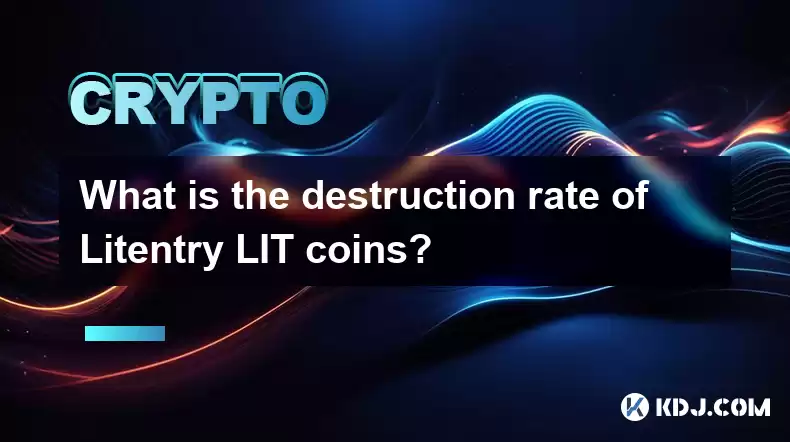-
 Bitcoin
Bitcoin $117800
0.49% -
 Ethereum
Ethereum $4432
0.55% -
 XRP
XRP $3.106
1.07% -
 Tether USDt
Tether USDt $1.001
0.01% -
 BNB
BNB $835.8
1.74% -
 Solana
Solana $189.1
2.72% -
 USDC
USDC $0.9999
-0.01% -
 Dogecoin
Dogecoin $0.2302
3.65% -
 TRON
TRON $0.3485
-0.69% -
 Cardano
Cardano $0.9212
-0.91% -
 Hyperliquid
Hyperliquid $46.97
1.45% -
 Chainlink
Chainlink $22.77
5.61% -
 Stellar
Stellar $0.4284
0.82% -
 Sui
Sui $3.766
2.82% -
 Bitcoin Cash
Bitcoin Cash $583.5
-0.82% -
 Ethena USDe
Ethena USDe $1.001
0.03% -
 Hedera
Hedera $0.2512
2.78% -
 Avalanche
Avalanche $24.18
2.27% -
 Litecoin
Litecoin $120.2
2.10% -
 Toncoin
Toncoin $3.450
1.96% -
 UNUS SED LEO
UNUS SED LEO $9.412
-0.92% -
 Shiba Inu
Shiba Inu $0.00001298
2.35% -
 Uniswap
Uniswap $10.99
3.75% -
 Polkadot
Polkadot $3.962
3.09% -
 Dai
Dai $1.000
0.00% -
 Bitget Token
Bitget Token $4.643
1.38% -
 Cronos
Cronos $0.1511
-0.08% -
 Ethena
Ethena $0.7246
3.18% -
 Monero
Monero $254.9
7.90% -
 Pepe
Pepe $0.00001100
3.32%
What is the destruction rate of Litentry LIT coins?
The periodic burning of LIT coins through various mechanisms reduces the circulating supply, increasing scarcity and potentially enhancing the coin's value.
Dec 26, 2024 at 05:31 am

Key Points:
- Understanding Litentry and Its Utility
- LIT Coin Tokenomics and Burn Mechanism
- Measuring LIT Coin Burn Rate
- Benefits of LIT Coin Burning
- Impact of Burn Rate on LIT Coin Value
- Historical Burn Rate Data
- Future Burn Rate Projections
What is Litentry (LIT)?
Litentry is a decentralized identity aggregation network that aims to build a bridge between Web2 and Web3 identity systems. It enables users to manage their digital identities across multiple platforms and applications while maintaining privacy and control. The LIT token is the native cryptocurrency of the Litentry ecosystem and plays a crucial role in its operation and governance.
LIT Coin Tokenomics and Burn Mechanism
The LIT coin has a maximum supply of 100 million tokens, with an initial circulating supply of around 46 million. The tokenomics of LIT involve a burn mechanism designed to reduce the supply and increase scarcity over time.
The burn mechanism involves regularly removing a portion of LIT coins from circulation, effectively decreasing the total supply. This is achieved through various mechanisms, including:
- Transaction Fees: A portion of transaction fees collected on the Litentry network is allocated to the burn address.
- Staking Rewards: A percentage of staking rewards earned by node operators is burned.
- Buyback and Burn: The Litentry team may occasionally use revenue to buy back LIT coins from the market and burn them.
Measuring LIT Coin Burn Rate
The burn rate of LIT coins can be calculated by dividing the number of coins burned within a specific period by the total circulating supply at the beginning of that period. This metric provides insights into the pace at which the supply is being reduced and can impact the value of the token.
Benefits of LIT Coin Burning
Burning LIT coins has several benefits for the Litentry ecosystem and its token holders:
- Scarcity and Value: By reducing the circulating supply, burning increases the scarcity of LIT coins, potentially leading to an increase in value.
- Stabilization: Burning helps stabilize the price of LIT by reducing the impact of supply fluctuations, particularly in times of market volatility.
- Governance: Token burning can enhance the governance aspect of LIT by giving more weight to the tokens that remain in circulation.
Impact of Burn Rate on LIT Coin Value
The burn rate of LIT coins can significantly influence its value. A high burn rate can create a positive feedback loop, where the increased scarcity drives up the price and attracts more investors, leading to further burning and continued price appreciation.
However, it's important to note that the burn rate is not the sole determinant of token value. Other factors, such as adoption, utility, and market conditions, also play a role in price determination.
Historical Burn Rate Data
Litentry has consistently demonstrated a commitment to burning a significant portion of its tokens. Over the past year, the average burn rate has been around 5% per year, with occasional larger burns.
Future Burn Rate Projections
The Litentry team has outlined plans to gradually increase the burn rate over time as the ecosystem grows and the token gains wider adoption. This strategy aims to enhance the value of LIT coins for long-term holders.
FAQs
Q1: How often does Litentry burn LIT coins?
A1: The frequency of LIT coin burns varies, but the team typically conducts burns on a quarterly basis.
Q2: What is the maximum supply of LIT coins?
A2: The maximum supply of LIT coins is 100 million, as determined by the tokenomics of the project.
Q3: How can I participate in LIT coin burning?
A3: You can participate in LIT coin burning by staking your tokens or using the network, as transaction fees are partially allocated to the burn address.
Q4: What is the purpose of the Litentry identity aggregation network?
A4: The Litentry network enables users to manage their digital identities across multiple platforms and applications, providing a decentralized and privacy-preserving solution to the challenges of Web3 identity management.
Q5: How does the burn mechanism contribute to the long-term value of LIT coins?
A5: The burn mechanism reduces the circulating supply of LIT coins, creating scarcity and potentially driving up the price over time.
Disclaimer:info@kdj.com
The information provided is not trading advice. kdj.com does not assume any responsibility for any investments made based on the information provided in this article. Cryptocurrencies are highly volatile and it is highly recommended that you invest with caution after thorough research!
If you believe that the content used on this website infringes your copyright, please contact us immediately (info@kdj.com) and we will delete it promptly.
- Kazakhstan's Crypto Leap: Bitcoin ETF and Central Asia's Digital Finance Future
- 2025-08-13 12:45:19
- BlockDAG Presale Blazes Past $371M: Fundraising Frenzy Fuels Crypto Sensation
- 2025-08-13 13:05:21
- Meme Coins: Chasing the 2025 Surge – Which Will Moonshot?
- 2025-08-13 10:25:23
- Bitcoin's Wild Ride: Rally, Pullback, and What's Next
- 2025-08-13 10:25:23
- Bitcoin, Bitmax, and Institutional Demand: A New Era of Crypto Investment
- 2025-08-13 10:45:12
- Solana, ROAM, and Airdrops: What's the Buzz in 2025?
- 2025-08-13 11:35:13
Related knowledge

How to purchase Aragon (ANT)?
Aug 09,2025 at 11:56pm
Understanding Aragon (ANT) and Its PurposeAragon (ANT) is a decentralized governance token that powers the Aragon Network, a platform built on the Eth...

Where to trade Band Protocol (BAND)?
Aug 10,2025 at 11:36pm
Understanding the Role of Private Keys in Cryptocurrency WalletsIn the world of cryptocurrency, a private key is one of the most critical components o...

What is the most secure way to buy Ocean Protocol (OCEAN)?
Aug 10,2025 at 01:01pm
Understanding Ocean Protocol (OCEAN) and Its EcosystemOcean Protocol (OCEAN) is a decentralized data exchange platform built on blockchain technology,...

How to invest in Kyber Network Crystal v2 (KNC)?
Aug 12,2025 at 05:21pm
Understanding Kyber Network Crystal v2 (KNC)Kyber Network is a decentralized liquidity hub built on the Ethereum blockchain that enables instant token...

Where can I buy UMA (UMA)?
Aug 07,2025 at 06:42pm
Understanding UMA and Its Role in Decentralized FinanceUMA (Universal Market Access) is an Ethereum-based decentralized finance (DeFi) protocol design...

How to sell my Ren (REN) tokens?
Aug 13,2025 at 11:35am
Understanding REN Tokens and Their Role in Decentralized FinanceREN is an ERC-20 token that powers the Ren protocol, a decentralized interoperability ...

How to purchase Aragon (ANT)?
Aug 09,2025 at 11:56pm
Understanding Aragon (ANT) and Its PurposeAragon (ANT) is a decentralized governance token that powers the Aragon Network, a platform built on the Eth...

Where to trade Band Protocol (BAND)?
Aug 10,2025 at 11:36pm
Understanding the Role of Private Keys in Cryptocurrency WalletsIn the world of cryptocurrency, a private key is one of the most critical components o...

What is the most secure way to buy Ocean Protocol (OCEAN)?
Aug 10,2025 at 01:01pm
Understanding Ocean Protocol (OCEAN) and Its EcosystemOcean Protocol (OCEAN) is a decentralized data exchange platform built on blockchain technology,...

How to invest in Kyber Network Crystal v2 (KNC)?
Aug 12,2025 at 05:21pm
Understanding Kyber Network Crystal v2 (KNC)Kyber Network is a decentralized liquidity hub built on the Ethereum blockchain that enables instant token...

Where can I buy UMA (UMA)?
Aug 07,2025 at 06:42pm
Understanding UMA and Its Role in Decentralized FinanceUMA (Universal Market Access) is an Ethereum-based decentralized finance (DeFi) protocol design...

How to sell my Ren (REN) tokens?
Aug 13,2025 at 11:35am
Understanding REN Tokens and Their Role in Decentralized FinanceREN is an ERC-20 token that powers the Ren protocol, a decentralized interoperability ...
See all articles

























































































